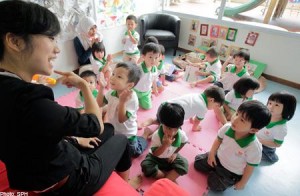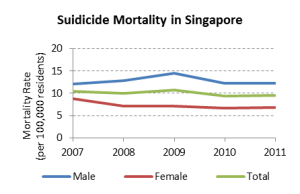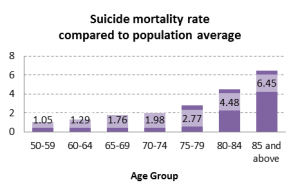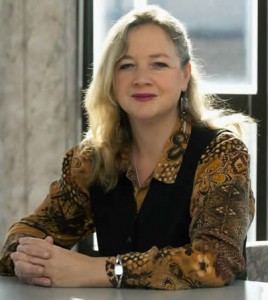The following are excerpts of debates on improving the fertility rate, childcare standards, and workplace policies for women, which took place during the July 9 & 10 sittings of Parliament.
Birth rates and singlehood
Lina Chiam asked about the (i) the birth rate among married couples; and (ii) the percentage of single Singaporeans over the past 15 years.
Teo Chee Hean: Singapore faces the challenge of declining birth rates. The last time that the resident Total Fertility Rate (TFR) was above the replacement level of 2.1 was in 1976. The resident TFR was 1.20 in 2011.
Ever married females are having fewer children over time. From 1996 to 2011, the average number of children born to ever-married citizen females aged 30-39 declined from 1.89 to 1.52. Over the same period, the average number of children born to ever-married citizen females aged 40-49 has declined from 2.32 to 2.06.

The proportion of single Singaporeans has been rising. Among Singaporean men aged 30-34, the proportion of singles rose from 35% in 1995 to 44% in 2011. Among Singaporean women aged 30-34, the proportion of singles rose from 21% in 1995 to 31% in 2011.
Promoting flexi-work arrangements
Mary Liew asked (a) whether the Ministry of Manpower has a record of the number of women employed under flexi-work arrangements; (b) if so, how many women under the rank and file category and the PME category are employed under flexi-work arrangements; and (c) how will the Ministry encourage employers to consider offering flexi-work employment to address the manpower shortage.
Foo Mee Har asked what enhanced measures are being considered to promote flexible work arrangements to (i) increase the availability of flexi-work for government employees with young, elderly and disabled dependants; and (ii) encourage more private companies to offer flexi-work options for professionals, managers and executives.
Tan Chuan-Jin: Flexible work arrangements are an important means for employees to manage both work and personal needs. Properly implemented, we believe that flexible work arrangements can improve employee engagement and enhance their sense of well-being and provide flexibility all round.
The provision of flexible work options also avails employers to a larger pool of potential workers who might otherwise find it difficult to join the workforce. This is an important point to emphasise. We do know that there are people, especially women after having the children, are looking to re-enter the workforce but are also looking for flexible work arrangements.
Given the tight labour market, we do encourage employers to consider adjusting the work arrangements to make it flexible so that you can attract a portion of Singaporeans to come back into the labour market. This can be mutually beneficial for both employers and employees.
To promote flexible work arrangements, the Government has in place a range of initiatives. This includes funding assistance schemes, such as the Work-Life Works! Fund, and Flexi-Works! Scheme, where employers receive Government co-funding when they put in place flexible work arrangements that would directly benefit their employees. These include professionals, managers and executives. More than 840 companies and their employees have benefitted from these two programmes so far, and we encourage more companies to participate and come on board.
Senior Parliamentary Secretary Mr Hawazi Daipi chairs a national Tripartite Committee (TriCom) on Work-Life Strategy to oversee initiatives to encourage and help employers implement flexible work arrangements. The TriCom has been working with the Employer Alliance, under the Singapore National Employers Federation (SNEF), to organise more fora and dialogue sessions to share effective work-life practices amongst employers.
The Employer Alliance is enhancing its Work-Life Tool Kit and developing more case studies to better help employers recognise the value of enabling work-life harmony for their workers, and at the same time, to implement flexible work-life strategies.
This year, the TriCom is also organising the Work-Life Excellence Award to showcase employers who have put in place good work-life practices and to encourage others to follow suit. And many of these practices are indeed practical and replicable across many of the companies.
In the course of the next two years, the TriCom will focus on fostering workplace cultures that support flexible work arrangements. One initiative that is currently being piloted is the Home-based Work and Smart Work Centres Project by IDA to take advantage of Singapore’s Next-Generation broadband network to facilitate working from home or from satellite offices. While the initiative is not targeted solely at professionals, managers and executives, this group will see more options opening up to them if the pilot proves successful.
While the Government will continue to promote and facilitate the provision of work-life arrangements, employers need to take the lead in implementation with the active support of their employees, as well as the unions. Employees and unions can also help the process by suggesting options and practical alternatives for the companies to take up.
We do not have comprehensive statistics on the number of employees who require and are currently employed on flexible work arrangements. Nonetheless, we are heartened that more employers are now offering work-life arrangements to their employees. For example, in 2010, 35% of establishments offered at least one form of work-life arrangement to their employees, which is up from 25% in 2007. We do foresee that this trend would probably continue.
As the largest employer in Singapore, the Public Service is taking the lead in offering flexible work arrangements to its officers. There are various schemes to help public officers better balance their work and personal needs, which can include looking after their parents, young children or dependants. Many agencies have both flexi-time and flexi-place practices that gives officers options in terms of how they carry out work alongside their personal needs.
The option of a reduced-hour work week is also available to officers who are not able to take on a full work load due to their personal commitments. These flexible working arrangements complement the range of childcare and parental care leave that public officers can tap on for their care-giving responsibilities.
The Public Service has also leveraged its Work-Life Network to build a culture of workplace flexibility. The Network meets regularly to share good practices and has fora and learning journeys to enhance capability in the area of flexible workspace.
In addition, the Public Service also provides resources to educate individual officers and supervisors on the new ways of work, and the responsibility and trust that needs to come about in order to implement flexible work practices successfully.
The fact of the matter is flexible work arrangements can work and has worked and we do encourage companies to take on board and to try these arrangements. This would go a long way in engaging the workforce at the same time, in encouraging more people to return to the workforce.
Mary Liew: I am also the Vice-Chair of the NTUC Women’s Committee. The NTUC Women’s Development Secretariat has been helping some 12,500 women over the past five years to rejoin the workforce.
We recognise that there is a tight labour market right now. Many of these jobs for the women are rank and file jobs. I would like to also add that increasingly, there are more demands for the PME jobs. We would like to ask the Minister of State what more can be done, together with the tripartite partners, to improve the situation.
Although we have been encouraging the companies but the take-up rate has not been as encouraging as we had hoped. I would like to ask if there are any further plans to look into providing a more holistic and flexible support for companies to provide more flexible work arrangements for workers including the PMEs and also to reduce the dropout rates from the workforce and to retain the women within the workforce.
Tan Chuan-Jin: We are quite open to suggestions and ideas about new initiatives that we can put in place to incentivise and encourage companies to go along this path.
We do note that in terms of trends, flexible work arrangements are increasing. For example, as mentioned, the public service in a quite significant way, has been embracing it, and trying to encourage it. It actually varies from sector to sector. A lot depends on the nature of the jobs, whether it allows for flexible work arrangements.
But we do believe that there is still a lot of scope. For example, we do know that in the F&B industry in the developed countries. There is a lot of part-time staff. And they surge the staff numbers during peak hours, for example, during lunch time and dinner time. That kind of flexible work arrangements encourages a lot of women to come back into the workforce, who are looking at coming back to work, but perhaps not looking at full-time work. We do not notice many companies embarking on those practices here.
We do believe that with the tightening labour market, we hope that that in itself, would incentivise companies to take that leap and to make that change. The transition, I think, is not easy.
Culturally, we have used to operating on a particular basis for a very long time. We find that along with other productivity efforts, there is sometimes a bit of inertia in moving along those lines. The natural process will come from the tightened labour market and companies would begin to explore.
What we really need to do is to actively promote this. We need to highlight companies that have successfully implemented these practices in place, so that other companies can realise that it is actually quite feasible and to emulate it and to try it out. We do not have any other particular initiatives right now.
We have put in place a number of programmes as highlighted earlier. We will be quite happy to take on board suggestions from Members of this House and from the public as to whether there are other measures can be put in place. My sense is that as the labour market tightens, and companies are beginning to feel the effects, I would encourage companies to explore, for those that can, flexible work arrangements for their staff.
Ang Hin Kee: For a start, will the Ministry consider having the public sector share the age profile and gender profile of all the employees as an effort to encourage the hiring of workers of all ages, all gender and the proportion share of the flexi-work arrangement in the workforce?
Tan Chuan-Jin: I do not have the specific figures with me but that is something that I can check on, and revert to you on it.
Patrick Tay: Are there any targets set by his Ministry in the number of employers embarking on flexible work arrangements for employees who are parents?
Tan Chuan-Jin: We do not have a specific target per se. What we are tracking are the trends and what we do note is that the numbers are increasing. The percentage of companies that are participating is increasing, and that is something that we are encouraged by, and we continue to do as much as we can to get as many companies on board as possible.
Encouraging higher birth rates
Lee Bee Wah asked whether, in light of the possibility that Singapore’s population will shrink from 2025 if we do not have new citizens, (a) there is any lesson that can be learnt from the European and Norwegian countries in the way they manage their population growth; and (b) whether other measures are looked at to encourage higher birth rates.
Intan Azura Mokhtar asked if there are plans to enhance the baby bonus scheme or other plans to help improve the total fertility rate of Singaporeans.
Teo Chee Hean: Many European countries are addressing their population challenges by pursuing a mix of pro-parenthood and immigration policies. Nordic countries such as Sweden, Denmark and Norway have relatively high Total Fertility Rates (TFR) of between 1.88 and 1.98. These countries have a broad array of pro-parenthood measures such as good childcare systems, generous leave provisions and financial support for child raising costs. We have been studying their policies in the course of developing ours.
Pro-parenthood measures may vary across countries due to differing cultural and socio-economic conditions. The Nordic countries have higher Government spending on pro-parenthood measures, but they also have significantly higher tax rates. The personal income tax rates in the Nordic countries range from 29% to 63%, and most people pay income tax there, compared to Singapore’s personal income tax rates which range from 3.5% to 20%. In fact, most Singaporeans do not pay income tax because the income level at which our income tax kicks in is quite high.
The total fertility rates vary between different countries. I mentioned that in Sweden, Denmark and Norway, the range is between 1.88 and 1.98. Among other European countries, such as Germany and Italy, they vary between 1.39 and 1.41. Germany is 1.39, Italy is 1.41. The US has a TFR of 1.93. So it is not so easy to relate directly the policies or the amount of expenditure to the TFR because there are many other factors at work.
There is one observation, though, in the Nordic countries which do have a higher TFR of 1.88 to 1.98. A high proportion of births are to women who are not married to the father of the child. This is one main difference between their TFR and those of other countries at similar levels of development.
Based on OECD reports, out-of-wedlock births made up about half of all births in Sweden, Denmark and Norway in 2010. In contrast, Asian societies, including Singapore, continue to value having children within the context of marriage. Creating a supportive environment for Singaporeans to form families and raise children remains a key Government priority.
Over the years, we have significantly enhanced our Marriage and Parenthood package, and currently set aside $1.6 billion per year for a broad range of measures. These include: Support for singles to find their life partner; Baby Bonus cash gift and co-savings to help parents defray the costs of child-raising; maternity and childcare leave provisions to help parents balance work and family life; as well as measures to improve the quality, affordability and accessibility of childcare options.
Since 2001, the parents of around 350,000 children have benefitted from these measures.
We have also invested heavily in areas such as education, healthcare and security, in order to make Singapore a good place for families. There are, of course, housing subsidies as well for first-time homeowners to encourage them to set up their own home, and these are not included in the $1.6 billion that I mentioned earlier for the Marriage and Parenthood package.
We are reviewing policies and measures to support marriage and parenthood, taking into account public feedback and the experiences of other countries. Over the next few months, we will be engaging various stakeholders to discuss new ideas as well as enhancements to existing measures. We welcome views and suggestions from the public on how we can improve Singapore’s birth rate.
However, we need to recognise that relying on Government measures alone would not raise Singapore’s birth rate, as getting married and having children are very personal decisions that reflect broader social values and attitudes. To support and encourage Singaporeans, we will need to strengthen Singapore’s pro-family environment, where employers, family members and society-at-large all have a part to play.
Lee Bee Wah: Definitely we are not encouraging more births out of wedlock. A good childcare system is very important. I would like to ask the Deputy Prime Minister would there be more support given for childcare centres because there is a lot of feedback that there is insufficient childcare centres, and also the fees have gone up tremendously over the last few months.
Teo Chee Hean: Childcare is one of those issues which have consistently been identified by young parents as an issue, which if we could make more accessible, more affordable, would be helpful to them.
There are already currently childcare subsidies. The Baby Bonus is there and it can be used for that. The Child Development Account is also used by many of the parents to help to defray the cost of childcare. In fact, childcare is one of the main ways in which the Child Development Account is used today. But we are looking at this issue again to see whether there are areas that we can improve on.
Intan Azura Mokhtar: Will the Prime Minister’s Office (PMO) consider extending paid maternity leave, or better still, having paid parental leave, for both mothers and fathers? Because if you look at the Nordic countries, or even the European countries, such as Germany, Sweden and Norway, their paid parental leave is more than 40 weeks for both parents compared to our 16 plus three days.
Teo Chee Hean: The Member is talking about parental leave, not maternity leave? Maternity and parental leave – yes. The last we looked at maternity leave, we were very careful because there was also another group of persons who were very concerned that this would impact upon the employability of women. That was a fairly large area of concern.
We wanted to make sure that we did not, through making maternity leave provisions more generous, impact on women being employed – as a result of which it would be harder for women to be employed. That is not what we want to have happen as well. And that is why we have this balance where the one additional month of the maternity leave is actually paid for by the Government.
We are open to ideas on how this can be done and I do support having some signal and some practical measures in which men are encouraged to take on a greater role in parenthood and being a present parent rather than a sort of parent from a distance.
Lina Chiam: I would like to ask a very controversial question to the Deputy Prime Minister. Would he consider “Baby Drop”, since Malaysia is doing that and we are having this population problem of not having enough babies? And since the child is born from God’s love and not the fault of the parents, is it possible that the Deputy Prime Minister would consider a “Baby Drop” for Singaporeans to drop their babies off in cases where the child is born out of wedlock?
Teo Chee Hean: I think this is – as Mrs Chiam says – a controversial area. We must be very careful when we implement such measures whether or not we end up inadvertently encouraging unwanted pregnancies and births, and causing greater problems as a result. So I think we need to be very careful about this.
Janice Koh: My supplementary question is with regards to the strategies that Singapore employs. Irrespective of marital status, just looking at a whole country’s statistics, can Singapore not continue to model after the Nordic countries in terms of employing strategies that could also work in Singapore? Irrespective of how we calculate the statistics, whether it is birth out of wedlock or within the family context?
Let me re-phrase. We have been talking about the statistics, comparing the Nordic countries and Singapore, and how the main difference is in calculations. I mean the Nordic countries count out-of-wedlock births as legitimate births, whereas in Singapore we are looking at encouraging baby-making within the family structure. What I am trying to say is can we not look at models across the board and strategies that have worked in Nordic countries in any case?
Teo Chee Hean: Yes, we are certainly looking at that, but we have to be very careful. I raised the issue of marriages out of wedlock only because we have to be careful about how we implement the measures. There may be collateral side effects. There are major cultural differences.
When we look at the urbanised East Asian societies – Japan, Taiwan and Hong Kong – they also have low fertility rates. They have also tried measures of various kinds. While we will certainly look at all these measures, we have to be careful of the collateral side effects, the unintended side effects on our society. And we also have to be realistic about what we can achieve.
Seah Kian Peng: My first proposal concerns a group of people who want to have children but for various reasons are unable to. IVF – can we do more for them? I know we are already extending some subsidies. Could these be further increased because this is the group of couples who want to have children?
My second supplementary question is something very uncontroversial. It is relating to paternity leave. I have argued several times in the House, I have been pushing to legislate paternity leave. I recognise the other angles, the business costs of it. But I think we should make a start somewhere, and legislating it even for as short as one day. It is an important signalling effect from the Government.
After all, all of us recognise that parenting is a shared responsibility by both the mother and the father. Having talked to many residents, young couples, many of them have cited that paternity leave is something that is important to the family. I believe it is an important that to push and allow our TFR to go up. I hope the Deputy Prime Minister would consider these two suggestions.
Teo Chee Hean: I know of Mr Seah’s work in the area of families, and also particularly fatherhood, and I appreciate it very much. And these are all ideas which we will take into consideration.
Workfare Income Supplement (WIS) for grandparent childcare-givers
Intan Azura Mokhtar asked if the Ministry of Manpower will consider extending the Workfare Income Supplement to grandparent caregivers who help look after their grandchildren and hence reducing the need for childcare services or help by foreign domestic workers (FDWs).
Tharman Shanmugaratnam: It is very encouraging that many older Singaporeans care for their grandchildren while their parents are away at work. This is a reflection of our strong family ties, and is also a good way for older Singaporeans to keep active.
Measures like the Grandparent Caregiver Relief, which is a $3,000 tax relief, given to working mothers, provide recognition for grandparents who play the role of caregiver and help the mothers take care of their children.
The objective of the Workfare Income Supplement (WIS) scheme is different. WIS was designed to supplement the incomes and CPF savings of lower-income Singaporeans, and to encourage them to enter and remain in the labour market.
Allowances received for carrying out family support roles such as babysitting and care-giving for dependents are considered transfers within the family. They are not external sources of income derived from employment, and hence it would not be appropriate to consider these transfers for WIS.
Employment of female employees who are pregnant
Intan Azura Mokhtar asked if the Ministry of Manpower will consider making it mandatory for employers to continue employing female employees who are pregnant, throughout their pregnancy, and not just within six months before the birth of their child.
Tharman Shanmugaratnam: The Government does not condone the discrimination of female employees due to their pregnancy or maternity. The Employment Act (EA) today already allows any employee, including female employees in any stages of pregnancy, to appeal to the Minister for Manpower if they feel that they have been unfairly dismissed. If the Minister finds that the employee has been dismissed without just cause, he may then reinstate the employee or order compensation to be paid to her.
Recognising that some employers may be tempted to dismiss their pregnant employees before their due date, the EA further requires an employer who dismisses a pregnant female employee without sufficient cause within the last six months of her pregnancy to pay her the maternity benefits that she would otherwise be entitled to under the Act.
While the Government protects pregnant female employees against unfair dismissals, we must also be mindful that employers will be less inclined to hire women of childbearing age if we over-prescribe the protection of pregnant employees in our laws. This ultimately affects the employability of a wider group of workers.
MOM last reviewed the protection for pregnant female employees in 2008, when we extended the protection period for female employees from the last three months of pregnancy to the last six months of pregnancy. In our current review of the Employment Act, we are consulting our tripartite partners on whether there is scope to further extend the protection period, without compromising female employability.
At the same time, we acknowledge that legislation cannot be a complete solution to achieve fair employment outcomes. We need to work with our tripartite partners to change mindsets and ensure that we build an inclusive society that recognises fair treatment and equal opportunities. To this end, MOM has been working closely with employers and unions through the Tripartite Alliance for Fair Employment Practices (TAFEP) to promote fair, responsible and merit-based employment practices.



















